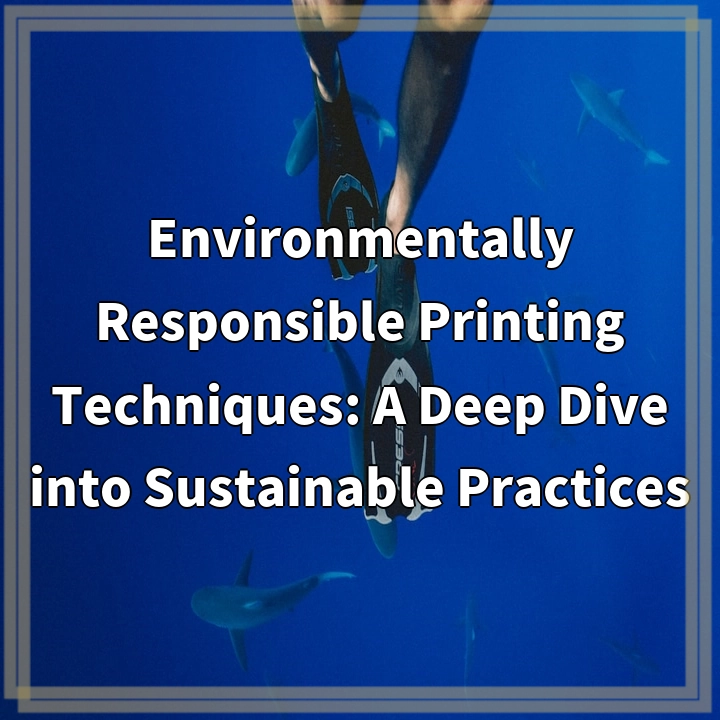Physical Address
304 North Cardinal St.
Dorchester Center, MA 02124
Physical Address
304 North Cardinal St.
Dorchester Center, MA 02124

Environmentally responsible printing techniques refer to sustainable practices adopted in the printing industry to minimize its environmental impact. These techniques aim to reduce or eliminate harmful substances, conserve resources, and promote the use of renewable materials throughout the entire printing process.
Despite the growing awareness and adoption of environmentally responsible printing practices, several challenges and obstacles need to be addressed. Some of the key real-world problems include:
Implementing environmentally responsible printing techniques often requires upfront investment in new technologies, equipment, and materials. This can be a significant barrier for small-scale printing businesses or those with limited financial resources.
Finding high-quality sustainable materials, such as recycled paper or eco-friendly inks, may be challenging for printers. The limited availability of these materials can hinder the adoption of environmentally responsible practices.
The absence of standardized guidelines and certifications for environmentally responsible printing techniques can lead to confusion and inconsistency. This makes it difficult for clients and consumers to identify truly sustainable printing options.
Printing operations require a significant amount of energy, especially in large-scale printing facilities. The energy-intensive printing processes contribute to carbon emissions and environmental degradation.
The printing industry produces a substantial amount of waste, including paper trimmings, ink cartridges, and packaging materials. Proper waste management and recycling practices are crucial to mitigate the environmental impact.
Traditional printing techniques often involve the use of harmful chemicals, such as volatile organic compounds (VOCs) and heavy metals. These chemicals can pose risks to both human health and the environment, emphasizing the need for safer alternatives.
To overcome the challenges associated with environmentally responsible printing techniques, the industry and stakeholders need to focus on implementing the following solutions:
Governments can provide financial incentives and support programs to encourage printing businesses to adopt sustainable practices. These can include grants, tax benefits, and subsidies for investing in eco-friendly technologies and materials.
Encouraging collaboration among printing businesses, industry associations, and environmental organizations can help in sharing best practices, insights, and resources. This can foster innovation and expedite the adoption of sustainable printing techniques.
Efforts should be made to increase the availability and affordability of sustainable printing materials. This can be achieved through partnerships with suppliers, promoting recycling initiatives, and investing in research and development for eco-friendly alternatives.
Industry-wide certifications and standards can provide clear guidelines and criteria for environmentally responsible printing. This would enable businesses to promote their sustainable practices and provide transparency to clients and consumers.
Printing facilities can implement energy-saving measures, such as using efficient equipment, optimizing workflow processes, and investing in renewable energy sources. This would help reduce carbon emissions and lower operational costs.
Establishing effective waste management systems within printing facilities, including proper sorting and recycling of paper waste, ink cartridges, and packaging materials, can significantly minimize the environmental impact. Collaboration with recycling companies can ensure responsible disposal of printing-related waste.
Printing businesses should explore and transition to safer alternatives for traditional chemicals used in printing processes. This can include low VOC inks, soy-based inks, and water-based coatings, reducing both pollution and health risks.
By implementing these solutions, the printing industry can make significant progress towards more environmentally responsible printing practices. This not only benefits the environment but also enhances the reputation and competitiveness of printing businesses in a sustainable future.
If you’re wondering where the article came from!
#